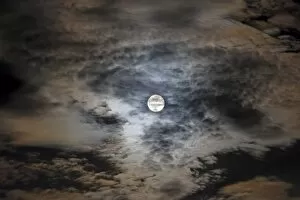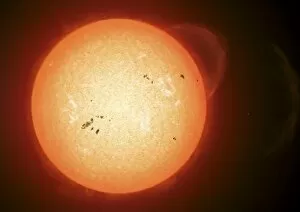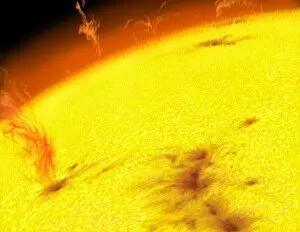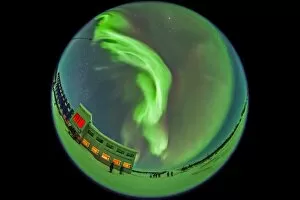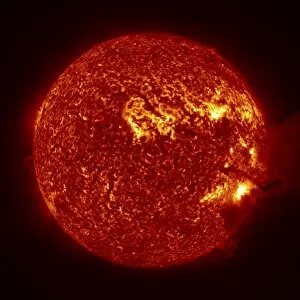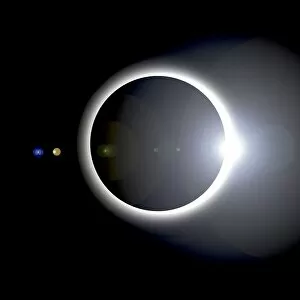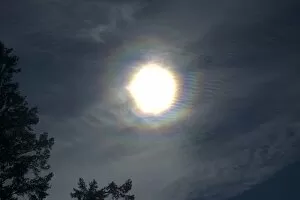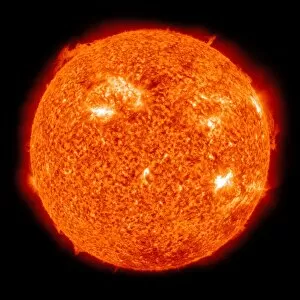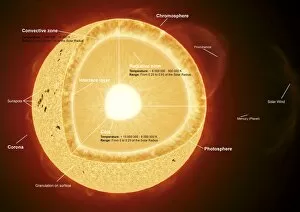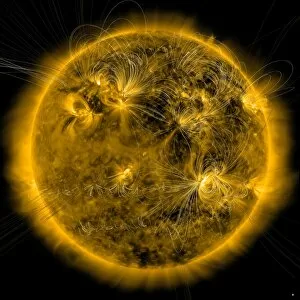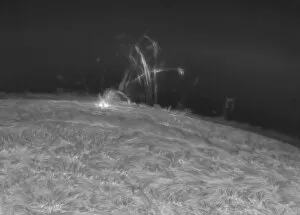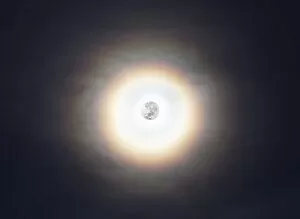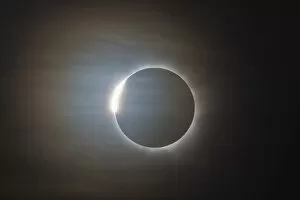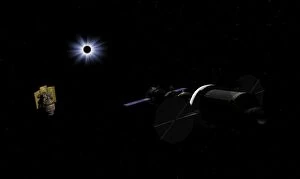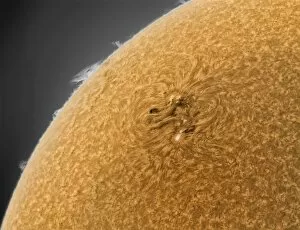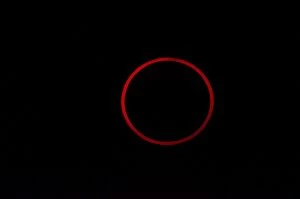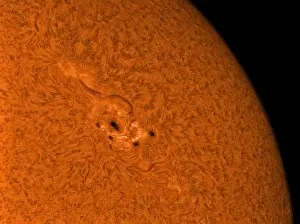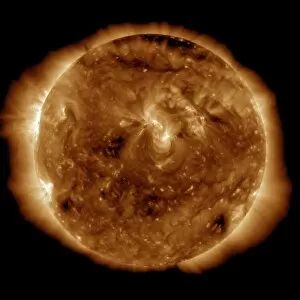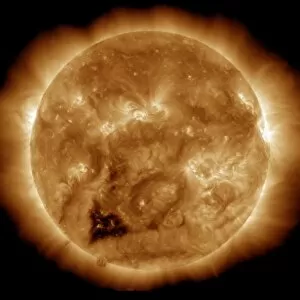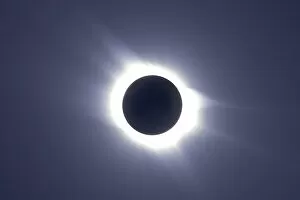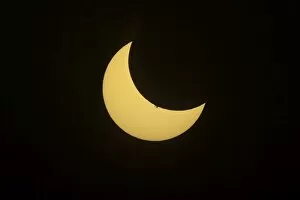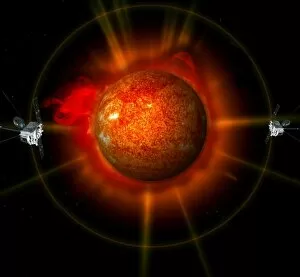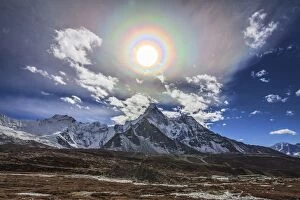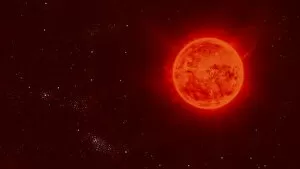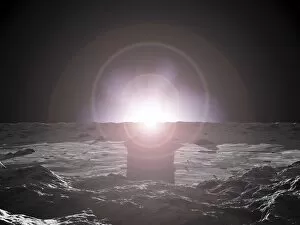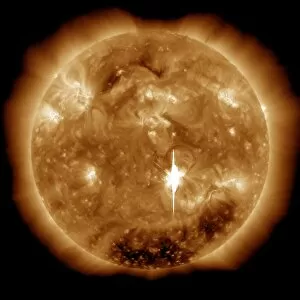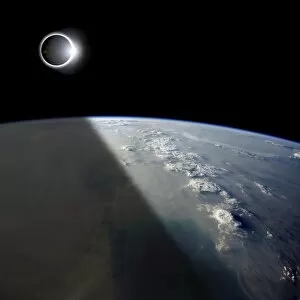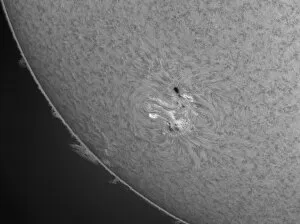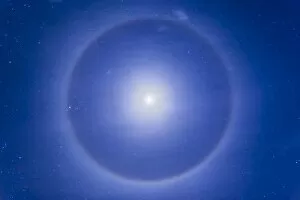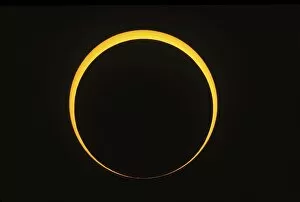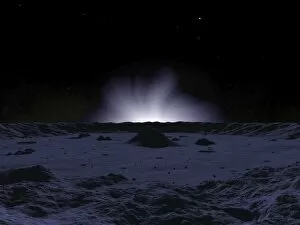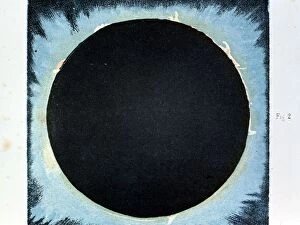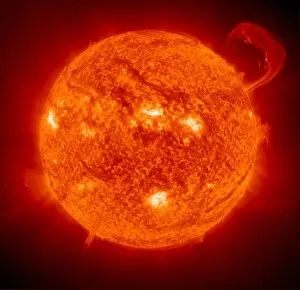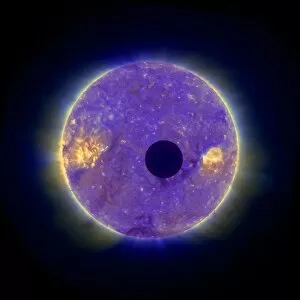Corona Collection (page 7)
"Unveiling the Enigmatic Corona: A Glimpse into the Mysteries of Our Sun" In 1919, during a mesmerizing solar eclipse
For sale as Licensed Images
Choose your image, Select your licence and Download the media
"Unveiling the Enigmatic Corona: A Glimpse into the Mysteries of Our Sun" In 1919, during a mesmerizing solar eclipse, astronomers witnessed an extraordinary phenomenon known as the corona. As the Moon aligned perfectly with our star, it revealed a breathtaking sight - a radiant halo surrounding the darkened silhouette. The corona's ethereal beauty captivated scientists and stargazers alike. Its delicate wisps of light danced across the sky like celestial brushstrokes, painting an awe-inspiring picture against the backdrop of space. This captivating display was aptly named after its Latin counterpart meaning "crown. " During that same historic event in 1919, observers were treated to another spectacle called the diamond ring effect. As totality approached and sunlight peeked through lunar valleys, a dazzling burst resembling a diamond ring emerged from behind the Moon's shadow. But what exactly is this enigmatic corona? Scientists have since unraveled some of its secrets. They discovered that it consists of superheated plasma extending millions of kilometers into space – far beyond Earth's orbit. These fiery tendrils are known as solar prominences and can erupt with immense energy. Even more astonishingly, aurora borealis sightings in places like Muonio, Finland showcased how Earth's magnetic field interacts with particles emitted by our Sun to create stunning displays featuring both coronas side by side. Over time, advancements in technology allowed us to capture remarkable images such as false-color photographs taken during total solar eclipses in 1979 or even record-breaking events like March 29th, 2006 when people worldwide marveled at yet another total solar eclipse. As we continue exploring these cosmic wonders and pushing scientific boundaries further than ever before, one thing remains certain - our fascination with coronas will persist. For they remind us that even amidst darkness and obscurity lies incredible beauty waiting to be unveiled.

